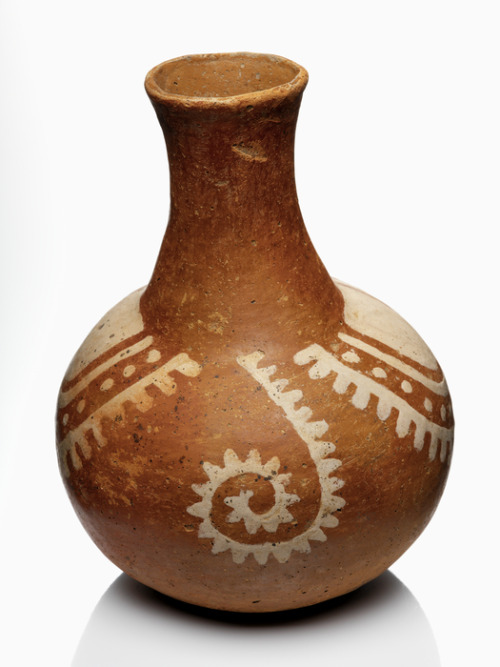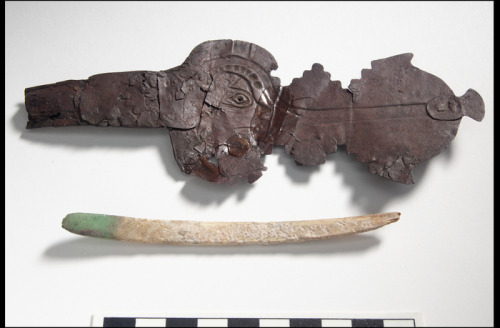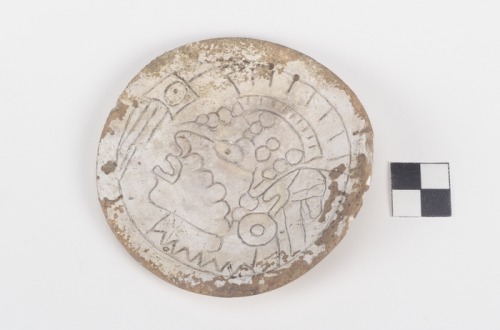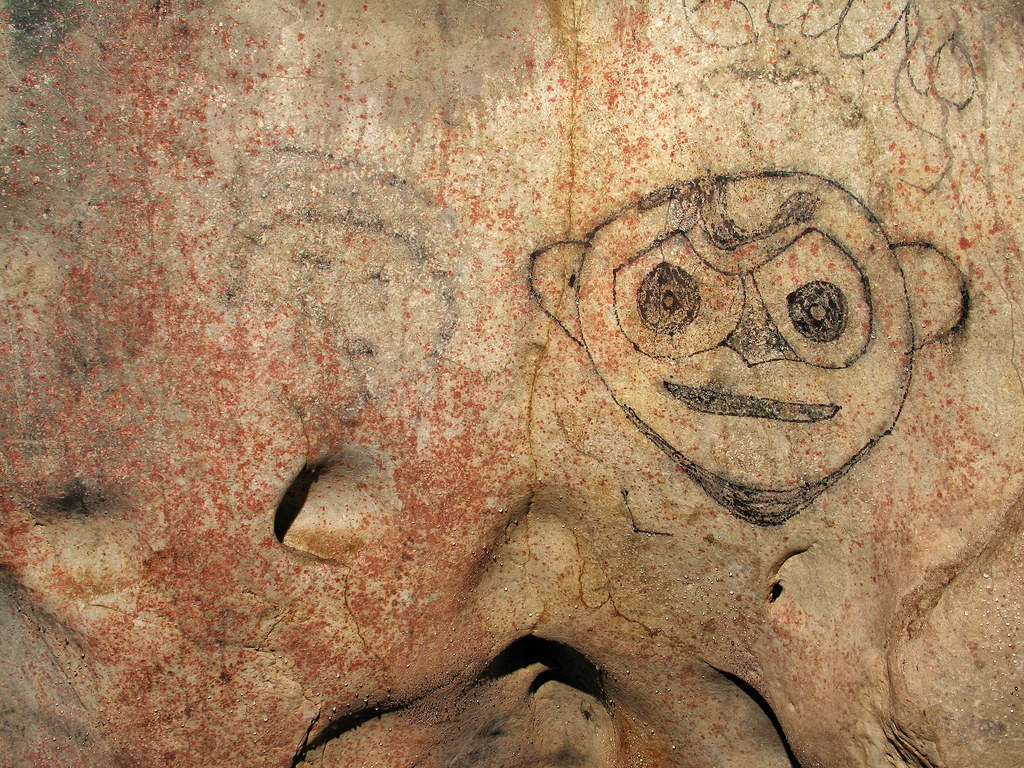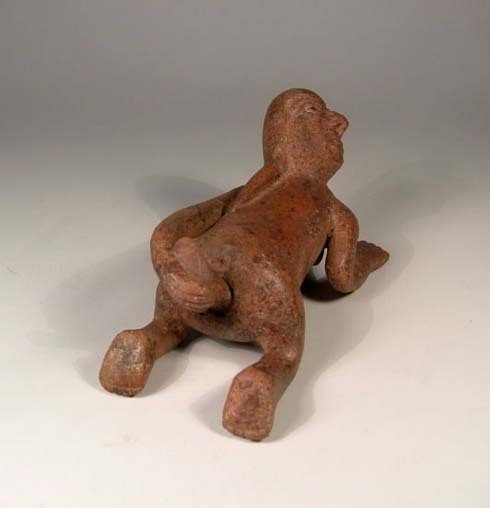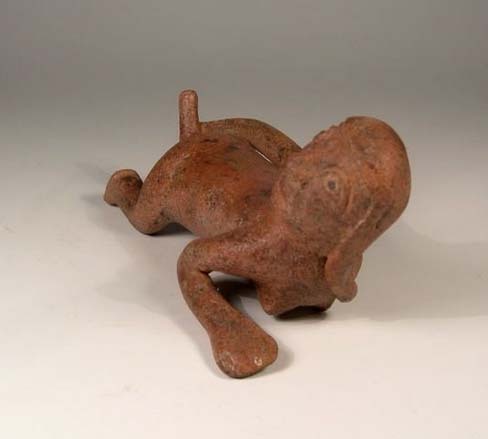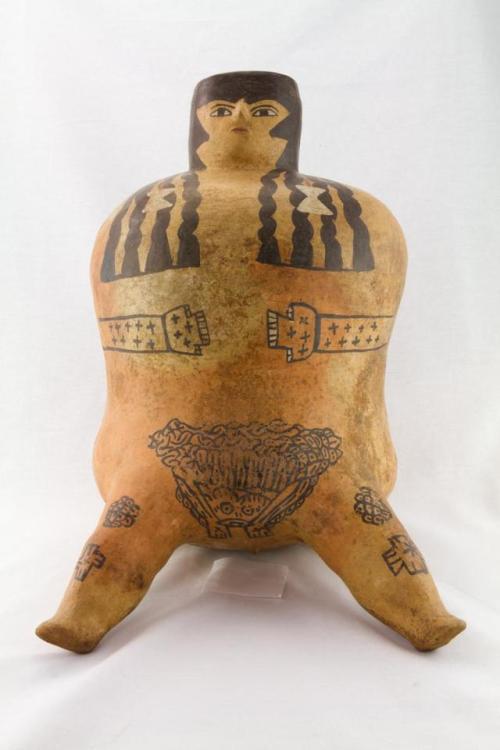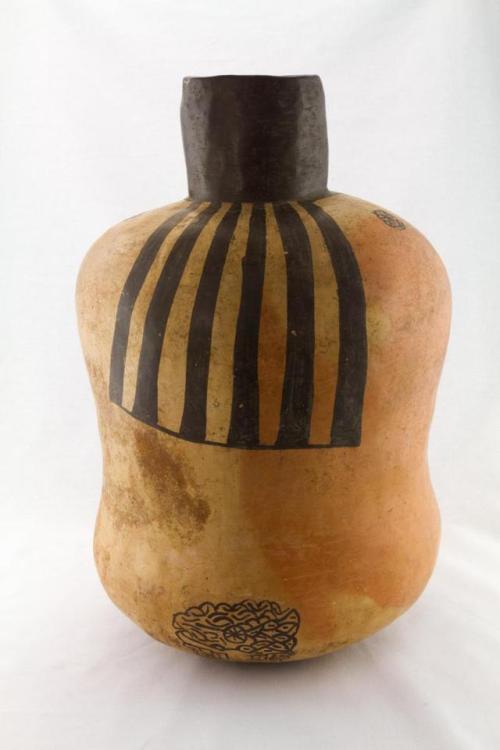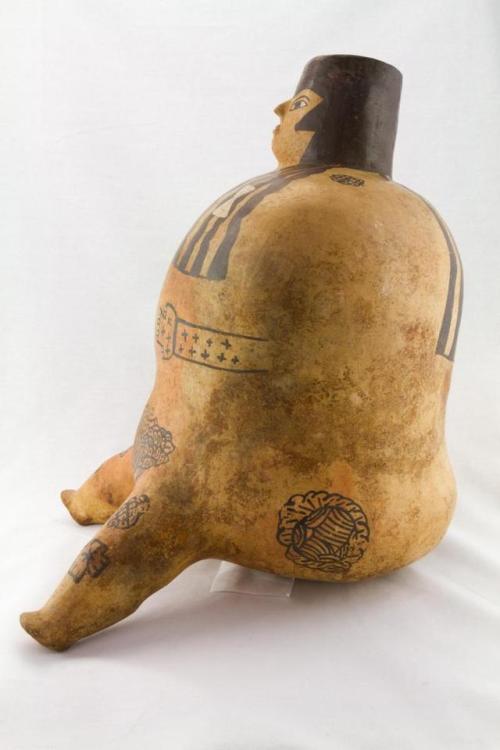#pre-columbian
Anni Albers holding pre-Columbian miniature, 1935-1967.
“Anni Albers and her husband and fellow artist, Josef Albers, met at the legendary Bauhaus in Weimar, Germany and became influential teachers there before emigrating to the United States, where they nurtured students at Black Mountain College and Yale University. Their ideas about modern art, however, were profoundly shaped by a different country. Between 1935 and 1967, they made no less than thirteen trips to Mexico and encountered art and artifacts that changed the way they thought about material, color, and abstraction.”
From “Pre-Columbian Mexican Miniatures: The Josef and Anni Albers Collection”, 1970.
Post link
Maya jadeite earflare, 3 cm high (1 ¼ in)
Yucatan Peninsula, Mexico, 3rd–9th century
These two nesting ornaments represent one half of a pair of earflares. Set into a wide perforation in the wearer’s earlobe, these ornaments would have been anchored in place in various ways. In some cases, a bead (or beads) were set into the front of the earflare, anchoring it with the help of a set of beaded counterweights that were threaded through the earflare and hung behind the earlobe. Another possibility is that an L-shaped plug (likely made of wood) was fitted through the earflare’s central opening, or stem, from the back, holding the entire assemblage in place, snug against the wearer’s ear. […]
The artist responsible for these ornaments was clearly a master of his craft, coaxing this stubborn stone not only into a flawlessly nested pair of earflares, but carving them down to a remarkable 1-2mm thickness—making them translucent when held in front of a bright light. Maya jade carvers more frequently focused on bringing out the most saturated, richest greens of jade rather than creating transparent effects, so this delicate translucency is unusual.
The fact that jade endured, unchanged, for centuries, connected it to ideas of timelessness, permanency, and longevity. It is not surprising, then, that sets of nesting jade earflares are found most frequently with jade “death masks,” which were placed over the faces of deceased rulers at Maya sites (including Palenque, Calakmul, Oxkintok, and Dzibanché) to convey a sense of eternal life to the departed.Source:The Metropolitan Museum
Post link

“Smiling” (sonrientes) Figure,Remojadas Culture, (Veracruz, contemporary Mexico, Mesoamerica), 7th–8th century, Ceramic with colour, 47.5 x 29.9 x 15.9 cm, The Metropolitan Museum.
Bowl in the form of a Turkey Vulture
Mississippian, 1250-1500
The National Museum of the American Indian
Post link
Taino petroglyph, Municipio de Juana, Puerto Rico, roughly 1000 to 1500
Photo: Alan Cressler
Today’s piece of erotic art history comes to us from Peru and is dated between 550-700 CE. (1) In this scene, a Moche lady lays on her stomach as she tilts her head and reaches back to administer a hallucinogenic enema to herself.
Native Americans throughout South America utilized the practice of hallucinogenic mushroom enemas which is documented thoroughly in their own art. The practice would later be documented in the early accounts of Spanish explorers (2) nearly one thousand years after this piece was made.
It is open to interpretation as to if this is an actual piece of erotic art or if it is just rates an honorable mention, but there is no reason to assume this is a purely chaste enema. Due to enemas’ potential to feel pleasurable, there is an entire genre of enema eroticism in Western culture as well as a Western tradition of combining drug intake with sex acts.
Without borrowing from Western culture, however, another reason to consider the erotic potential of this piece is that the Moche were extremely prolific in their erotic pottery, and a significant portion of it is devoted to anal sex indicating that they were well aware of the erotic potential of anal play. Given that the original erotic significance (or lack there of) of the piece is not currently knowable, it is being included in the erotic art history project as a point of interest.
REFERENCE / FURTHER READING
(1) icollector: Online Collectables Auction: “Pre Columbian Moche Erotic Figure“
http://www.icollector.com/Pre-Columbian-Moche-Erotic-Figure_i15180357
(2) DRUG TIMES ARTICLE: “Psychedelic Enemas”
https://www.drugtimes.org/hallucinogens-culture/psychedelic-enemas.html
MAYAN MUSHROOM STONE ARTICLE: “Origin of a Mushroom Religion; Soma in the Americas”
^^ PLEASE NOTE THAT THIS ARTICLE IS *AMAZING*!!! This article contains the most in depth ancient art history of drug use I have ever seen.
WIKIPEDIA ARTICLE: “Moche Culture”
https://en.wikipedia.org/wiki/Moche_culture
Post link
Possible Embassy Found In Major Mayan City
A recent study of the area in the Maya city of Tikal has found an unusual complex of buildings, which seems to be similar to the citadel of Teotihuacan. Tikal is in northern Guatemala, and Teotihuacan is central Mexico about 600 miles to the north.
Inside the complex in Tikal were found weapons in a Teotihuacan style, including ones made from green obsidian from central Mexico, incense burners, carvings of Teotihuacan’s rain god, and a burial in a pyramid with offerings similar to offerings in Teotihuacan burials. Ceramics within the pyramid have been dated to around 300 CE.
Interestingly, an elite Maya compound has been discovered in Teotihuacan, with its murals smashed and buried. Was this site the corresponding Tikal embassy to Teotihuacan, the partner of Teotihuacan’s embassy complex in Tikal? The two cities had a difficulty relationship: Teotihuacan invaded Tikal in 378 CE.
Dense Network of Amazonian Villages Found with Laser Scanning
Laser scanning technology successfully peered through the Amazon rain forest’s thick canopy to reveal the footprint of a complex network of ancient villages in southeastern section of Brazil’s state of Acre. Dwellings in these little-known settlements, which date to between 1300 and 1700 CE, were built atop raised mounds of earth arranged in a uniform circular pattern around a central plaza. Rather like clock faces according to researchers.

The scans also showed that the villages were connected via an organized system of roads. Most villages had two roads leading away to the north, and two leading away to the south. The roads also varied with some being smaller and sunken into the ground, others larger and protected on the sides by banks.
In total the archaeologists studied some 36 villages. The area appeared densely populated with some villages as little as 2.5 kilometers (1.6 miles) apart.
~ Nasca Vessel.
Culture: Nasca
Place of origin: Perú, south coast
Date: 100 B.C. – A.D. 800
Medium: Ceramic
amazing tattoos have such a long history
Post link
TLATILCO “VENUS” FIGURINE
MORELOS, MEXICO
Mexico
1200-900 BC AD
Bichrome ceramic with light beige slip and brick red ornamental paint.
h. 57 cm; 22 ½ in
The Barbier-Mueller Collection, Pre-Columbian Art
Post link
Anthropomorphous pendant with danglers
Mid Cauca (Quimbaya) - Early period
Goldwork, lost wax casting
Museo del Oro, Bogatá
Post link











